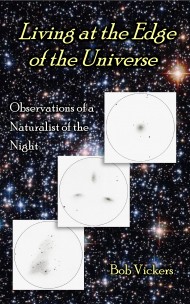Decent weather the last couple of nights has allowed me to go out early, before Moonrise and find two more Galaxy trios from the Astronomical League GG&C list. Both have been pretty straightforward to find with the combination of a Rigel Quick Finder, a Stellarvue 10×60 finder scope, and a low power eyepiece. I’m getting more comfortable using the 18″ Obsession and I like it!
I actually found Trio 43 first on Wednesday night. It was a cool and clear evening but the transparency was not the greatest and I was initially concerned about clouds moving in from the west. But, the clouds held off until I finished. This was my first visit to this little triad of galaxies in Lacerta and all-in-all it was fairly easy with a magnitude range of 12.8 to 13.7. The elliptical galaxy N7274, in the middle of the group, was easy to spot with direct vision. The other two (N7276 & N7273) were dimmer and required averted vision to spot but could be held with direct vision thereafter. Just as I was finishing up with my sketch a nearby screech owl favored me with his tremulous, descending note call — a fitting end to a pleasant evening.
I observed Trio 42 early on Thursday evening. It was cool and clear again and the transparency was a little better than the night before. This was also my first visit to this little group in Pegasus but it was a bit more challenging than Trio 43. Its magnitude range is 13.9 to 14.6, about a magnitude dimmer on average than Trio 43, so they all pretty much required averted vision. These three galaxies make a long right triangle spanning about 11 arc minutes and there is a very nice even brightness double star about a third of the way from N7275 to N7270. N7270 is the largest and brightest galaxy with a slightly elongated halo oriented E/W, a slightly brighter core, and what appears to be two stellar nuclei. One of these is probably a superimposed field star. Another dim field star is just to the north. N7275 is just an extremely dim streak, probably an edge-on spiral, and N7271 is just a very small, very dim smudge of light. Both show the glitter of a very faint stellar nucleus.


